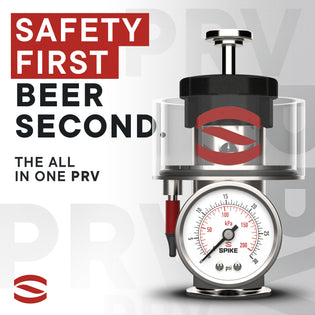
Have you ever had a beer that, as it warmed up, gave off the flavor and aroma of movie theater popcorn butter? That’s diacetyl and it is a very common (and preventable!) off flavor. Diacetyl is naturally produced by fermenting yeast. A quick lesson on its formation: Vicinal Diketones (VDK) are formed early in fermentation. Those are then converted to diacetyl. Over time, the yeast will convert the diacetyl to another compound that is not detectable when consumed.
Even if you aren’t competing, ensuring that the diacetyl is removed will make for a beer that ages better and is much more drinkable.
Several factors affect the formation and conversion of diacetyl. The easiest factors to control include time, temperature, and yeast strain. Some yeast strains (English strains in particular) tend to produce more diacetyl than other strains. They can also be slower to convert the diacetyl as well if they are highly flocculant. However, with any yeast, given time and slightly elevated temperatures to speed the process, diacetyl can be removed.
How to check to see if your yeast has removed the diacetyl from a beer in process:
- Take a small sample of your beer (2-3 ounces is good). I take the sample from the sample port on our Spike Conical which is incredibly easy however you can use a wine thief on a carboy.
- Put the sample in a water tight and microwave safe container. (I use 4 oz Nalgene containers)
- Microwave the beer with the top on, but not tight. You just want to warm the sample to about 170 degrees. You DO NOT want to boil it. If you accidentally boil the sample, dump it out and start over.
- After tightening the lid of your warmed sample, submerge it in a bucket, pitcher, bowl, or sink filled with 175-190 degree water for 30 minutes. This simulates rapid aging and will convert any VDK into diacetyl.
- Once the beer has been kept warm (again 170 degrees is the target) for 30+ minutes, chill it to room temperature and taste.
- If the beer has no detectable buttery character and/or slick, silky mouthfeel (another characteristic of diacetyl), you can drop the beer temperature and/or package it up.
- If there is a buttery character, allow for a few more days of maturation at room temperature. If you have a flocculant yeast, you could even give your fermenter a shake to get some of the yeast back up into suspension. This will help speed the removal of the diacetyl.
- Repeat this process until you have a clean final product.
Entering your beer in competitions
For any homebrewers entering beers in competitions, I highly recommend using this process. Most styles of beers are not supposed to have any detectable diacetyl. By doing this, you will greatly increase your chances of winning medals. Even if you aren’t competing, ensuring that the diacetyl is removed will make for a beer that ages better and is much more drinkable.
Jeff Schauland
Roanoke Tasting Room Brewer
Deschutes Brewery











